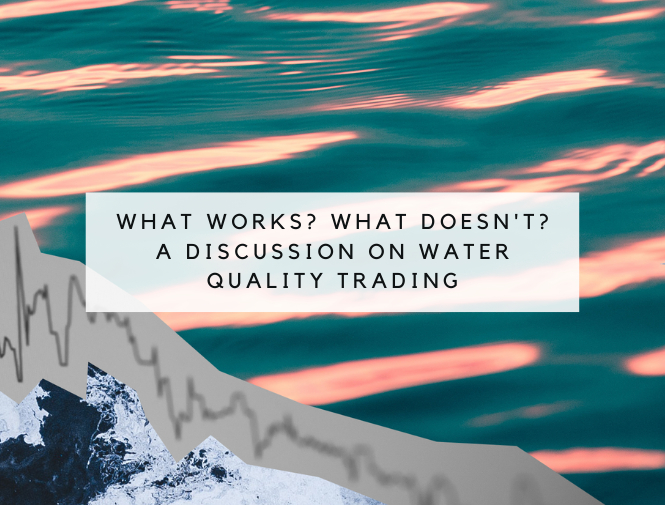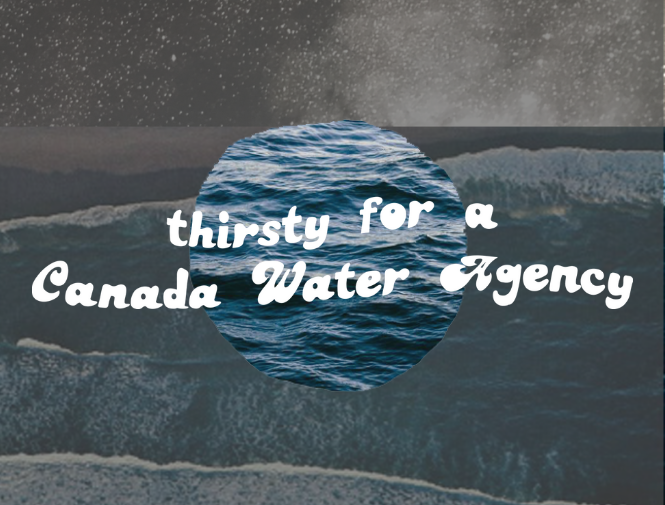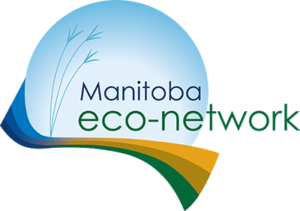
What Works? What Doesn’t? A Discussion on Water Quality Trading
March 21, 2021
Overview
Water quality trading is a permit scheme that involves trading credits from a lower pollutant site to a higher pollutant location, to ensure the watershed still meets environmental regulations. Some trade credit examples include nutrients that can be emitted per time or the change in temperature. This webinar introduced the pros and cons of water quality trading, its policy context in Manitoba, and past examples of water quality trading initiatives across North America.
Why is this important in Manitoba?
The Province of Manitoba’s Climate and Green Plan considers water quality trading as an innovative approach to improve nutrient reduction while supporting economic development. The Province of Manitoba also recently proposed nutrient targets for Lake Winnipeg to comply with the Water Protection Act, and is considering water quality trading in other watersheds in the province.
Speakers
Marina Puzyreva is a Policy Advisor for the International Institute for Sustainable Development. In this webinar, Marina introduced the concept of water quality trading, prerequisites to establishing a program including knowing pollution regulations and nutrient targets, key considerations in water quality management, and the Manitoba policy context, particularly in Lake Winnipeg and its tributaries.
Daniel Gladu Kanu is the Director of the Lake Winnipeg Indigenous Collective, a group that ‘represents the Indigenous voice for Lake Winnipeg and preserving the lands and waters of our Nations for current and future generations’. He presented his concerns about water quality trading related to environmental racism, environmental policies that disproportionally disadvantage individuals, groups, or communities based on race or colour. Daniel recommends that Indigenous knowledge should guide the implementation of policies that improve water quality in our watersheds.
Ronda Boutz and Angela Coleman work for the South Nation Conservation Authority (SNC) in Eastern Ontario. Ronda is the Team Lead for special projects, while Angela is the General Manager and Secretary/Treasurer. They summarized SNC’s Phosphorus Management program and how they engaged with stakeholders and farmers to create an offset management strategy that was fair to farmers and developers.
Tarah Heinzen is the Legal Director for Food & Water Watch, an American non-governmental organization that fights for safe food, clean water, and a livable climate. Tarah works out of their Portland, Oregon office. She shared her concerns about water quality trading, such as inhibiting on water and pollution quality goals, lack of accountability and transparency, and lack of enforcement.
Vicki Burns, MbEN Board Chair, treasurer of Hog Watch Manitoba and Director of the Save Lake Winnipeg Project, acted as moderator for this event.
Key Questions Asked
How can the proposed Manitoba regulations enable water quality trading? Are they the right kind of regulations?
Given target levels, we would be able to determine the emission limits for a single point source (ie. an individual location or facility). In addition to the regulations, there should be a plan on how permit systems would be given out. SNC had an engagement process that included stakeholders, farmers, and developers to ensure their offset management strategy was thorough and meets phosphorus control regulations.
Has the South Nation Conservation’s program led to a reduction in water pollution in the watersheds?
Development pressure from nearby Ottawa and Montreal has impacted the program’s effectiveness, however, over the past 20 years that the program has been in operation there has has been a noticable decrease of phosphorus across all projects. The SNC watershed is clay-based, which contributed to the lower than anticipated phosphorus decrease.
What policy or other alternatives can replace water quality trading?
We need good information to make good policy and regulations on water pollution reduction, such as information on the actual water quality (ie. how much phosphorus is in the water body) and to what extent agriculture is contributing to pollution in our watersheds. An issue brought up was how water quality trading does not necessarily reduce pollution, but relocates pollution to another location.
For Further Information
International Institute for Sustainable Development
Lake Winnipeg Indigenous Collective
South Nation Conservation Authority
Food and Water Watch
Case Study Research on Offsets for Water Quality Management – IISD (Report)
FWW v. Pennsylvania Department of Environmental Protection on declaring water quality trading illegal (Case)

Thirsty for a Canada Water Agency?
February 12, 2021
Overview
The Government of Canada hosted regional forums on the creation of a Canada Water Agency in February 2021. The Manitoba Eco-Network and the Forum for Leadership on Water hosted a webinar as a prelude to the regional forum, where we discussed freshwater and climate change issues pertinent to Manitoba.
Why is this important in Manitoba?
The effects of climate change are negatively impacting freshwater supply in Canada. It is especially pronounced in Manitoba, home to Lake Winnipeg, one of the world’s largest freshwater lakes. Fragmented water governance is another issue, as water transcends boundaries, yet we have multiple levels of government unable to agree on how to manage freshwater in the country. While the role of a Canada Water Agency has not been defined, a well-planned agency would provide a federal umbrella in dealing with freshwater challenges across the country, including in Manitoba.
Speakers
Richard Farthing-Nichol is the Director for the Forum for Leadership on Water, an organization that advocates for the protection and management of Canada’s freshwater resources and ecosystems. Richard introduced the concept of a Canada Water Agency, the history of its development, and why it would be beneficial for Manitoba and Canada as a whole.
Shianne McKay is a Senior Project Manager for the Centre for Indigenous Environmental Resources, which works in partnership with Indigenous Nations in supporting sustainable Indigenous communities and protecting their lands and waters. Shianne shared how Indigenous peoples might be involved in the Canada Water Agency, including respect for Indigenous water rights and how Indigenous peoples should play a role in defining the laws surrounding the agency.
Daniel Gladu Kanu is the Director of the Lake Winnipeg Indigenous Collective (LWIC), a group that ‘represents the Indigenous voice for Lake Winnipeg, and preserving the lands and waters of our Nations for current and future generations’. Daniel discussed five things the agency could do to help Lake Winnipeg, the 10th largest freshwater body in the world and one of Canada’s most polluted freshwater bodies.
Vicki Burns, MbEN Board Chair, treasurer of Hog Watch Manitoba and Director of the Save Lake Winnipeg Project, acted as moderator for this event.
Key Questions Asked
What are the panelists’ perspectives on agricultural wetland drainage, given it is provincial jurisdiction? Should this be addressed as part of the Canada Water Agency?
Floods from excessive wetland drainage can be costly, and downstream effects can have interjurisdictional effects. Water is interconnected in many ways, and it should be the job of the federal government to ensure the needs of watersheds are met. A Canada Water Agency would be an important step to deal with interprovincial water effects.
A Canada Water Agency cannot be an all-encompassing answer to our water issues. What is something you wouldn’t want the Canada Water Agency to do?
A Canada Water Agency should not be an agency that implements the “status quo” approach, with a lack of attention towards jurisdictional issues, especially Indigenous water rights. It should be an organization that properly addresses the transboundary nature of water, while being flexible enough to tackle various water issues across the country.
How much input will organizations like FLOW and CIER be able to contribute to the Canada Water Agency once it is implemented?
Up to this point, FLOW has spoken with interested organizations and led information gatherings, sharing perspectives, and providing a unified voice to the Government of Canada on what a Canada Water Agency should look like. CIER hopes that Indigenous Nations will be asked to weigh in on the topic, as part of the authority that they hold under the First Nations Land Management Act, and that the implementation of the Agency will be guided by Indigenous Knowledge for the benefit of all parties.
For Further Information
Forum for Leadership on Water
Centre for Indigenous Environmental Resources
Lake Winnipeg Indigenous Collective
Toward the Creation of a Canada Water Agency – Environment and Climate Change Canada (discussion paper)
Five Things the Federal Government Must to for Lake Winnipeg – Lake Winnipeg Foundation & Lake Winnipeg Indigenous Collective (report)
Five Foundational Pillars for the Canada Water Agency (collective submission)

